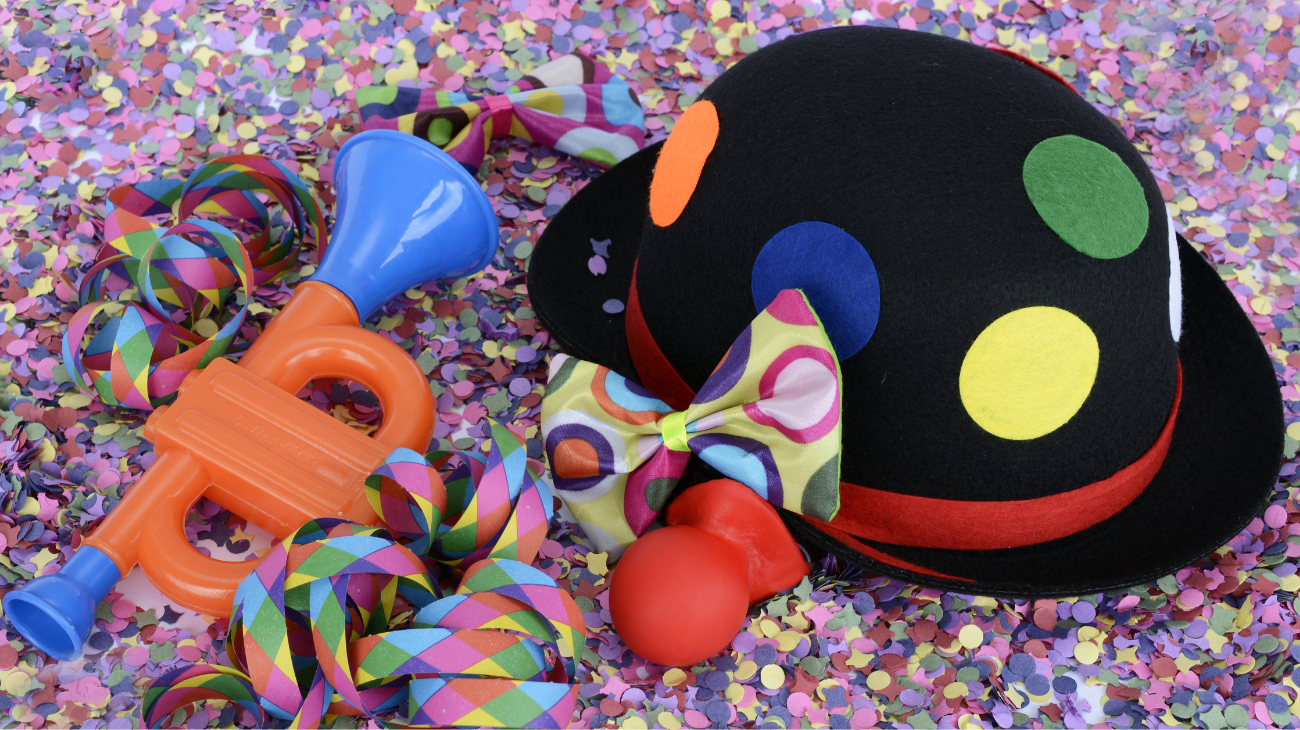Carnival is a popular celebration that involves millions of people around the world, but it also has a not insignificant environmental impact. Masks, costumes, confetti, streamers, balloons and other carnival paraphernalia are often made of non-biodegradable or recyclable materials; but sustainability can also be promoted during carnival.
- Carnival today
- Sustainability and the impact of carnival on cities
- Green Masks, a possible carnival of sustainability
Carnival today
Carnival is a traditional festival celebrated in many parts of the world, characterised by merriment, masks, costumes and festivities, with typical tricks and sweets, but what is its impact on sustainability?
Its origins are ancient and date back to pagan rites linked to the cycle of the seasons and the fertility of the earth. The name carnival, in fact, derives from the Latin carnem levare, meaning ‘to eliminate meat’, in reference to the period of fasting and abstinence of Christian Lent that follows the festival.
Many of these traditions have changed over time, such as the act of throwing seeds (mainly wheat) to propitiate an abundant future harvest, now supplanted by the throwing of paper confetti.
However, we often do not realise the environmental impact of this tradition.
Masks, costumes, confetti, streamers and other disposable items are sources of pollution and waste of resources. Therefore, it is important to look for sustainable alternatives that allow us to have fun without harming the planet.
Sustainability and the impact of carnival on cities
According to a report by Demetra Onlus, meat consumption in Italy has a hidden cost to society, due to the environmental and health impacts generated by its production and consumption, amounting to 36 billion euro per year, about 2% of the national GDP. Indeed, carnival is one of the times of the year when meat consumption increases, especially red and processed meat.
But not only that. According to an estimate by E-cology.it, about 25 thousand tonnes of carnival waste are produced in Italy every year, of which only 10% is recycled. The rest ends up in landfills or in the environment.
The production of waste, especially plastic, which results from the use of confetti, streamers, balloons, masks, costumes and other decorative elements, pollutes streets, parks, waters and undermines biodiversity.
Among the most used and most polluting materials are plastic, polystyrene, polyester and nylon, which take decades or centuries to degrade and release toxic substances.
Electricity consumption is another factor to be taken into account, resulting from the lighting and animation of the floats, squares and main streets.
Finally, air and noise pollution, generated by the use of combustion engines, sound and pyrotechnic effects, and vehicular traffic produces negative effects on health.
Green Masks, a possible carnival of sustainability
Speaking of masks, carnival and sustainability, to celebrate carnival in harmony with nature, without giving up imagination and fun, the ‘Green Masks’ can adopt some simple tricks, such as:
- Use certified cosmetics and environmentally friendly materials for masks, such as paper, cardboard, felt, cotton, wool, wood, cork, leaves, flowers and other natural elements. Avoid plastic, rubber, leather or other materials of animal origin, which are harmful to the environment and health. Dispose of materials in the household waste collection.
- Avoid glitter confetti and helium balloons, which are often made of materials from the polyester family, such as Mylar and Foil. Also avoid spray cans, which pollute and stain fabrics.
- Reduce the consumption of meat, especially red and processed meat, which has a high environmental and health impact. Choose plant-based or organic, local and seasonal foods.
- Participate in volunteer initiatives to clean the streets and squares.
What can those who organise the carnival event do to make it sustainable:
- Follow an international standard, such as ISO 20121 which sets out requirements for sustainable event management.
- Use local, recycled or biodegradable materials to make the floats, avoiding the use of plastic and toxic paints.
- Encourage environmentally friendly transport of wagons, choosing vehicles with pedals or electric vehicles.
For example, the Venice Carnival increasingly encourages visitors to use public transport, such as waterbuses, instead of private cars.
This is not just a festival of joy and fun. Many floats, in fact, deal with themes related to sustainability, safeguarding the planet and social satire, as does the famous Viareggio Carnival with works made of recycled and biodegradable materials.
In conclusion, carnival can be a sustainable celebration if we want it to be. And it is a clear example of how fun and sustainability can not only co-exist, but also make everything more mutually enjoyable.
Play for the planet!
